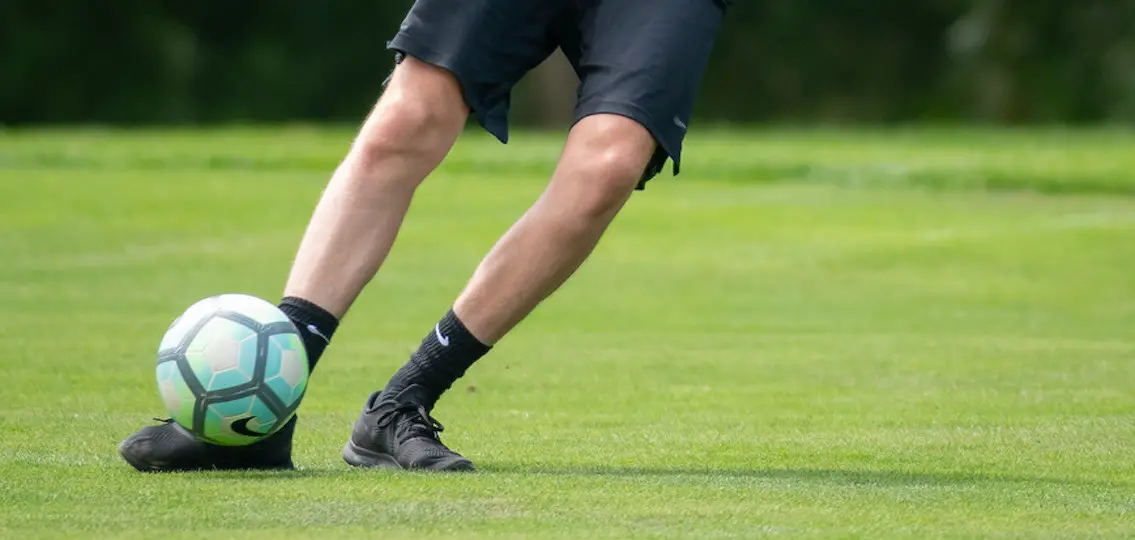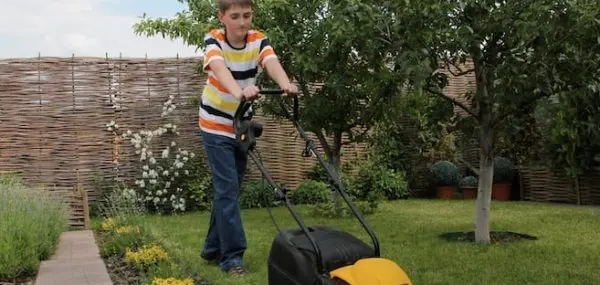Getting teens to stay active during the summer months can be a challenge, especially if they’re not involved in an organized sport. “I often have to beg, scheme, cajole, and throw down ultimatums,” says Jennifer Grimes, whose 13-year-old son is a self-proclaimed “not-sporty” kid. “Anything that’s sporty—he has a mental block. With no one his age in the neighborhood, there’s not much reason to go outside.”


Yet, we went and gave footgolf a shot. Because, why not?
“Giving things a try requires access without a big commitment of time or money. That’s important for teens and kids,” says Rachel Nagle, outdoor recreation manager at Cleveland Metroparks. “The key is to not think of yourself as not good enough. Just try it.”
Easier said than done? Here are a few tips from the experts on getting your kids off the couch and outside this summer:
5 Strategies for Keeping Teens Off the Couch this Summer
1. Overcome fear of the unknown.
“A kid may not be good at hitting, catching, or throwing—but that doesn’t mean they might not enjoy rock climbing. It’s important to expose them to a variety of experiences,” says Lisa Perry, senior national physical activity advisor at the nonprofit Alliance for a Healthier Generation.
These opportunities could be as close as the local park or rec center. For example, Cleveland Metroparks offers one-hour Try It sessions on a host of adventurous experiences, like sailing, fly fishing, mountain biking, rock climbing, kayaking, and stand-up paddleboarding. The goal of the Try It sessions is to get people of similar experience levels together, so no one feels intimidated.
2. Make it low-risk.
Hand-in-hand with fear of the unknown is fear of failure. “My son definitely has the concern that ‘If I can’t do it perfectly, I don’t want to do it,’” says Grimes. Perry suggests trying activities that are low-risk for teens. “Hiking is a good example: It’s challenging, but it’s low threat. You really can’t do it wrong. At the end of the hike, you still have the feeling of success.”
3. Set a good example.
My kids enjoy making fun of my soccer skills, so my foray into footgolf wasn’t without some personal risk. Yet, I still got a birdie (along with a lot of bogeys). Cleveland Metroparks recreation expert Nagle loves to see parents participate in Try Its alongside their teens. “Stand up paddleboarding is not easy,” says Nagle. “The teens are standing up in no time, while the parents’ legs are shaking. You see the kids become the teachers at that point, encouraging their parents and giving them advice. It really empowers them.”
Perry says setting a good example also comes down to attitude. “It’s good for teens to see that parents aren’t perfect. If they see their parents make mistakes in a physical activity—and keep going—it says a lot.”
4. Incorporate technology.
Sometimes getting teens outside means getting them off of the Xbox first. That’s why Perry suggests bringing technology outside—consider geocaching or a nature scavenger hunt that encourages the teen to take photos of what they find. “Looking for Instagram-worthy moments makes it fun and social. Cleveland Metroparks Zoo offers their own scavenger hunt maps online for just this purpose.
5. Keep it social.
The social aspect of these activities is the one that often seals the deal. One of Cleveland Metroparks most popular summer activities is Moonlight Golf: golf after dark. It’s an activity teens can do with their family or friends.

Whatever they try, it’s important to remind teens: “You don’t have to be the best,” says Nagle. “You create your own goals, whether it’s simply to have fun or to learn a new skill. It’s all about the camaraderie of trying.”




